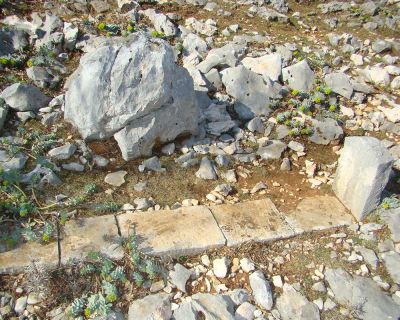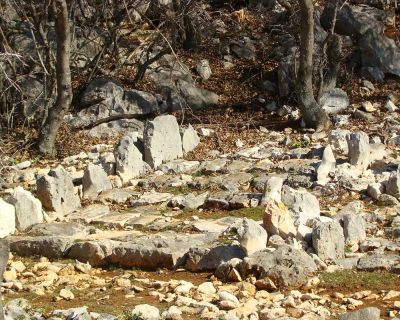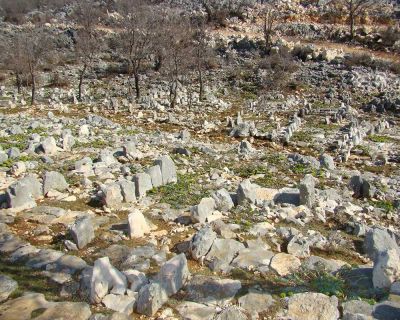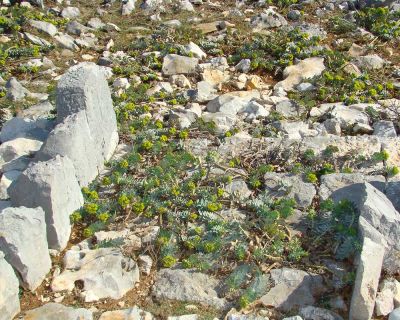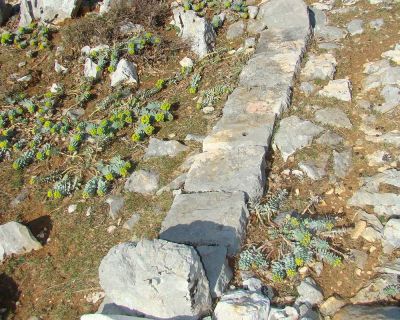Several well-preserved groups of mirila are found in the Velebit area.
Mirila are funerary stone memorials built along mountain paths that once served as routes between the inland settlements and the coastal cemeteries. They are associated with the seasonal life in the mountains, when those who died while staying in the highlands had to be carried to their parish cemetery by the sea.
Each group of mirila is located along the route to the coast, typically halfway between the village and the cemetery. Regardless of the demanding distances and physical effort required to carry the deceased, the body was never to be set down on the ground during transport. The pallbearers would take turns bearing the load for the arduous journey, but resting (and setting the deceased down) was permitted only at designated spots known as mirila: the first official resting point on the way from home to burial. At the mirilo, the deceased would be “measured” by marking the body’s length on the ground with two stone slabs. Only after burial would the mirilo memorial be properly constructed. The oldest mirila were fashioned from unworked stones of a suitable shape, while later examples feature stones skillfully dressed and carved by stonemasons. Special attention was given to the crafting and decoration of the headstone, the upright stone set at the deceased’s head.
For the inhabitants of Velebit, mirila held great cultural significance. They served as important mortuary markers, often considered more meaningful than the grave itself. After the burial, families would no longer visit the cemetery until another death occurred. This custom was largely due to the great distances between mountain settlements and parish cemeteries, and also the belief that “only the body is buried in the grave, while the soul remains at the mirilo.”
Instead, mirila served as lasting memorials to the deceased: passersby would take care to respect and preserve their appearance. This tradition persisted until the 1950s, after which it ceased entirely.
In December 2007, the Croatian Ministry of Culture issued a decree recognizing the funerary traditions associated with mirila as an item of intangible cultural heritage.
Near Starigrad Paklenica, two educational trails feature a total of eight mirila sites open to visitors. The first is located one kilometer from the center of Starigrad Paklenica, while the other is near the village of Ljubotić (turn off the main road at Tribanj Kruščica).


